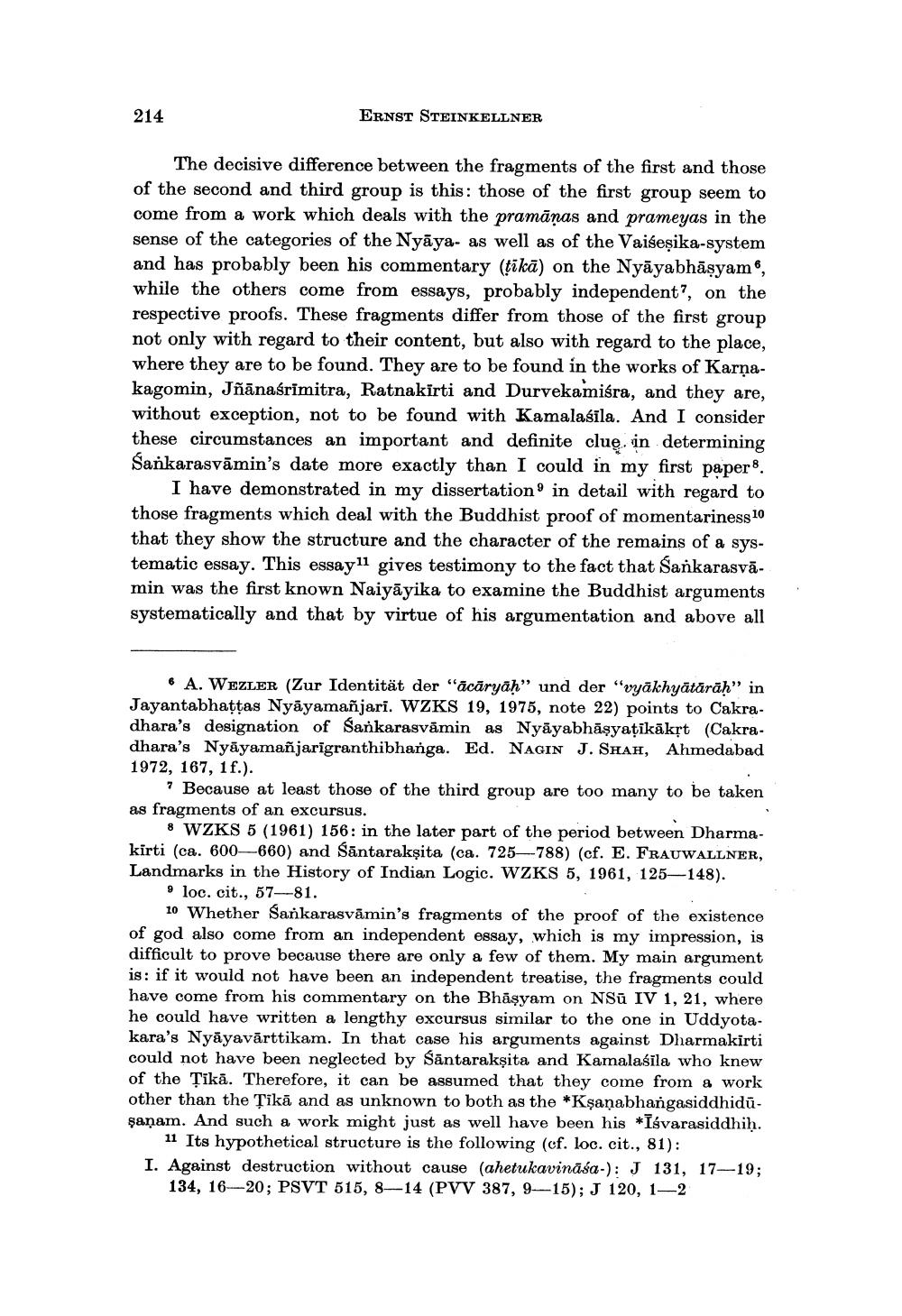Book Title: On Date And Works Of Naiyayika Sanskarasvamin Author(s): Ernst Steinkellner Publisher: Ernst Steinkellner View full book textPage 2
________________ 214 ERNST STEINKELLNER The decisive difference between the fragments of the first and those of the second and third group is this: those of the first group seem to come from a work which deals with the pramānas and prameyas in the sense of the categories of the Nyāya- as well as of the Vaišeşika-system and has probably been his commentary (tikā) on the Nyāyabhāsyam, while the others come from essays, probably independent?, on the respective proofs. These fragments differ from those of the first group not only with regard to their content, but also with regard to the place, where they are to be found. They are to be found in the works of Karnakagomin, Jñānaśrimitra, Ratnakirti and Durvekamiśra, and they are, without exception, not to be found with Kamalasila. And I consider these circumstances an important and definite clue. in determining Sankarasvāmin's date more exactly than I could in my first paper 8. I have demonstrated in my dissertation in detail with regard to those fragments which deal with the Buddhist proof of momentariness 10 that they show the structure and the character of the remains of a systematic essay. This essayll gives testimony to the fact that Sankarasvāmin was the first known Naiyāyika to examine the Buddhist arguments systematically and that by virtue of his argumentation and above all 6 A. WEZLER (Zur Identität der "ācāryāḥ" und der "vyākhyātārāh” in Jayantabhattas Nyāyamañjari. WZKS 19, 1975, note 22) points to Cakradhara's designation of Sankarasvāmin as Nyāyabhāşyaţikākst (Cakradhara's Nyāyamañjarigranthibhanga. Ed. NAGIN J. SHAH, Ahmedabad 1972, 167, 1f.). ? Because at least those of the third group are too many to be taken as fragments of an excursus. 8 WZKS 5 (1961) 156: in the later part of the period between Dharmakirti (ca. 600—660) and Santarakṣita (ca. 725—788) (cf. E. FRAUWALLNER, Landmarks in the History of Indian Logic. WZKS 5, 1961, 125–148). 9 loc. cit., 57-81. 10 Whether Sankarasvāmin's fragments of the proof of the existence of god also come from an independent essay, which is my impression, is difficult to prove because there are only a few of them. My main argument is: if it would not have been an independent treatise, the fragments could have come from his commentary on the Bhāşyam on NSū IV 1, 21, where he could have written a lengthy excursus similar to the one in Uddyotakara's Nyāyavārttikam. In that case his arguments against Dharmakirti could not have been neglected by Sāntarakṣita and Kamalaśila who knew of the Tikā. Therefore, it can be assumed that they come from a work other than the Tikā and as unknown to both as the *Kşanabhangasiddhidū. sanam. And such a work might just as well have been his *Távarasiddhiḥ. 11 Its hypothetical structure is the following (cf. loc. cit., 81): I. Against destruction without cause (ahetukavināśa-): J 131, 17-19; 134, 16-20; PSVT 515, 8-14 (PVV 387, 9-15); J 120, 142Page Navigation
1 2 3 4 5 6
